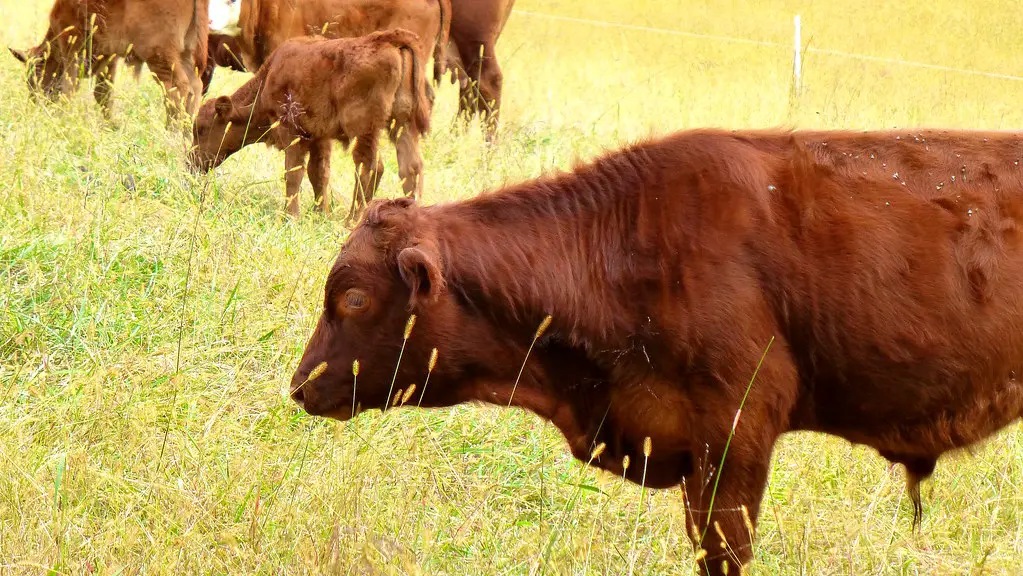
Imagine a breed of cattle built to conquer the rugged beauty of the American Southwest. Meet the Barzona, a unique breed forged from the harsh deserts and scorching sun of Arizona. These cattle embody resilience and adaptability, demonstrating that ideal livestock can be developed intentionally. Let’s explore the fascinating story of Barzona cattle and see if they might have a place on your ranch.
Origin
The tale of the Barzona breed begins in the early 1900s with F.L. Barzona, an Arizona rancher with a big dream. He envisioned cattle built specifically for the Southwest, with the hardiness to handle heat, the ability to travel long distances for forage, and the productivity to turn sparse grazing into quality beef. Through careful crossbreeding, his vision became a reality.
Characteristics of Barzona Cattle
- The Color Spectrum: Barzona cattle showcase a variety of coat colors. You’ll see classic reds, deep blacks, and various shades of roan (a mix of colored and white hairs).
- Horned or Polled: Both polled (naturally hornless) and horned Barzona cattle exist, adding to the variation within the breed.
- Built for the Southwest: Barzona are known for their impressive heat tolerance and ability to thrive in arid conditions where some breeds would struggle. Their moderate size and strong legs allow for efficient grazing, even in less-than-lush landscapes.
Pros of Raising Barzona Cattle
- Desert Warriors: If your ranch contends with heat, drought, and challenging terrain, Barzona cattle could be a perfect fit. They perform remarkably well under conditions that would stress other breeds.
- Maternal Instincts: Barzona cows are known for being attentive mothers with good milking ability, ensuring healthy, well-nurtured calves.
- Rough Forage = Satisfied Cattle: Their ability to thrive on less-than-perfect forage makes efficient use of available grazing resources, an asset in arid climates.
Cons of Raising Barzona Cattle
- Finding Your Herd: While expanding, Barzona cattle remain primarily a Southwestern breed. Locating reputable breeders might require more effort compared to sourcing mainstream beef cattle.
- Niche Market: The “Barzona” name might not have the immediate market awareness of widely popular beef breeds. However, their reputation for quality is growing!
Characteristics Table
| Characteristic | Description |
|---|---|
| Breed | Barzona |
| Origin | Southwestern United States |
| Colors | Red, black, various roan patterns |
| Horn Status | Both polled and horned exist |
| Size | Medium to Large |
| Temperament | Generally docile |
| Uses | Primarily beef production |
FAQ
- What are Barzona cattle known for?
- Extreme hardiness, heat tolerance, and adaptability to the harsh environments of the American Southwest.
- What breeds were first crossed to produce the Barzona breed?
- The foundation breeds included Hereford, Angus, Shorthorn, and the Africaner (a breed from South Africa).
- How much do Barzona cows weigh?
- Mature cows typically weigh between 1000-1500 pounds.
- Are Barzona cattle horned or polled?
- Both horned and polled Barzona exist.
Conclusion
Barzona cattle represent a triumph of intentional breeding. Their adaptability to the rugged Southwest is a testament to the potential for developing livestock suited to specific environments. If you’re ranching in challenging conditions, the Barzona deserves consideration. With their hardiness, good maternal traits, and quality beef, they might just become the backbone of your herd!
Your Thoughts?
Have you had firsthand experience with Barzona cattle? Do you think they’re a hidden gem in the cattle world? Discuss it in the comments!
